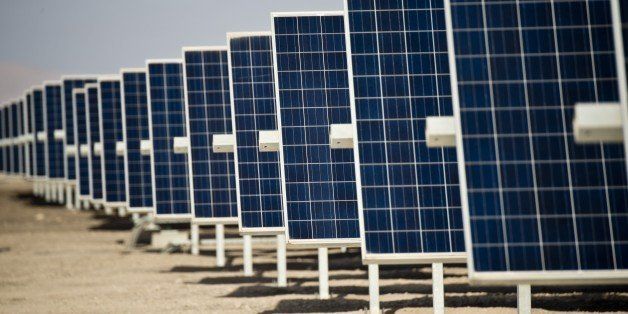
Co-authored with Grant Cooke
The First Industrial Revolution that arose in England in the late 18th century was a turning point in human history. Until then, draft animals had been the major economic power source. Then James Watt, an English mechanical engineer, changed everything when he redesigned and improved the steam engine. Watt's creative insight, allowed Great Britain to led the revolution in machine-based manufacturing.
The Second Industrial Revolution started in the U.S. around the end of the 19th century. America developed the beginnings of a domestic oil industry and coupled that volatile fuel with the tremendous power of the internal combustion engine. Together they powered a previously unimaginable world of machines and personal transportation. Thomas Edison with his electricity and then Alexander Graham Bell with the telephone revolutionized the daily lives of ordinary people and led to telecommunication centers, huge data server farms and complex electrical networks, all of which required vast amounts of energy.
Since the First Industrial Revolution, the planet has been getting hotter and smokier, and more crowded, creating severe environmental consequences. Each day, precious resources get scarcer. Today there are 7 billion people living on the planet, and by 2053, the UN predicts that there will be 10 billion people. Compounding the problems is the rise of a middle class in developing nations. People in emerging nations want to get out of poverty. They want the things that developed nations have--nice clothes, nutritious food (including animal protein for their children), and large, air-conditioned, electrified homes as well as education and a future for themselves and their children. They also want the things that most citizens of developed nations take for granted: washing machines, cell phones, refrigerators, televisions, and cars.
Add it up, and the world will soon be resource-constricted, particularly since the planet is running out of fossil fuels. We are reaching a tipping point with our fragile planet, and how the world responds, or does not respond, to climate change will have an unprecedented impact on the course of human history. This is exactly what prompted the agreement between US President Obama and PRC (China) President XI in mid-November to "collaborate" and work together on reducing each countries carbon emissions.
With China's emissions and pollution now making it the top nation (over-taking
the US) as the world leader in greenhouse gases (GHG), the impact on the health of every person in China, especially the nation's Capital, Beijing, was both remarkable and costly in terms of human health and the environment. The rapid building there and around the country, over the last decade, moved China into recognizing the need to stop GHG as well as revising pollution. The cost in health, lives and the environment forced a difference in the PRC National Government which took office and then implemented plans with funds and financing in 2012.
The issue is that there is a cost to reducing GHG as it also means stopping the nation and local dependence on fossil fuels. For China that means moving off of its historical dependence on coal to other lower emission fossil fuels and even nuclear power. Unfortunately, that change in energy resources mean that China would need to get natural gas from Russia (a major problem for them for economic, security and infrastructure reasons such as pipelines) and also Liquefied Natural Gas (LNG) sent by ships primarily from Australia. But fortunately, there is global evidence that a new era driven by sustainable green energy generation, innovative smart green technologies, and public sensitivity toward the environment has emerged. It started in Asia in the 1980s and then the Nordic Countries in the 1990s as well as then with Germany leading at the turn of the 21st Century.
We are calling this new industrial and hence economic era the Green Industrial Revolution, or GIR for short. The GIR has already proven to be viable, economic and successful in Japan, Korea and the Nordic countries where it has gone well beyond the First Industrial Revolution in the 18th century, the Second Industrial Revolution of the 20th century and what some call the Third Industrial Revolution at the turn of the 21st Century. The Green Industrial Revolution has replaced the carbon-generated and even nuclear power infrastructures with renewable energy, storage system technologies, and smart green on-site distributed grids.
Prompted by the Arab Oil Embargo of the 1970s, the Green Industrial Revolution started to emerge at the end of the 20th century. Initially proclaimed as occurring in northern Europe, it actually began in Japan and South Korea before it emerged in Europe.
As a small and densely populated island nation of 130 million people, Japan has a tradition for the need of energy, but with "no waste" that dates back to the Middle Ages. By the 1980s, Japan and South Korea were concerned with the need to become energy independent and secure. As a result, they developed national policies and programs to reduce their growing dependency on foreign fuels. By the beginning of the 21st century, China had leapfrogged the USA into this new era, driven by unprecedented economic growth and development, urbanization and infrastructure needs.
In northern Europe, the Green Industrial Revolution received a big push from Germany's Energiewende and its feed-in-tariff (FiT) program. Germany became the number one producer and installer of solar panels for homes, offices, and large open areas from 2006-09. In 2010, Italy then took the FiT concept into its economic and culture so that it held the distinction of world leader in solar panel installation. China took the lead in 2011 and continues as the number one solar panel and photovoltaic manufacturer and installer. Japan is now leading in auto manufacturing, jumping ahead of the competition with its hybrids.
The Green Industrial Revolution, with its extraordinary new technologies and promise of thousands of new green jobs, is trying to come to America. It is hampered by the lack of a national energy policy, and a political process that is beholden to the fossil fuel industry. Big Oil and now Natural Gas, which calls itself "clean energy", have been America's "elephant-in-the room" for over a hundred years, exploiting the nation's resources, pushing the country into a dependence on foreign oil producers who are politically destabilizing, and not aligned with our national interests.
The natural gas industry sees the rise and commercialization of hydrogen fuel cell cars from all the auto manufacturers around the world as its future. The industry anticipates being "selected" as the primarily source for hydrogen to refuel the thousands of hydrogen-powered cars predicted to be on the roads, starting with California and other areas of the US in 2015. A recent biding process in California awarded 20 out of 25 hydrogen refueling stations to one natural gas company. And Yes. There are ethical and conflict of interest issues in this process and the one company selected. These companies have "influenced" decisions made on the refueling stations as they know that these stations will need to be paid for over decades and make the consumers of all transportation systems dependent upon them: drilling, processing, pumping (pipelines and trains) as well as reforming into hydrogen energy for vehicles.
A new era of sustainability and carbonless energy generation is here now. The push , public policy, economics and technologies for renewable energy with a carbonless lifestyle will become history's largest social and economic megatrend. The potential of extraordinary benefits in the form of economic revival, innovation, emerging technologies, and significant job growth for those nations capable of fast entry is here today. Developing nations know this. Developed ones, like the US are still trapped in the Second and Third Industrial Revolutions. Indeed, the world has changed.
